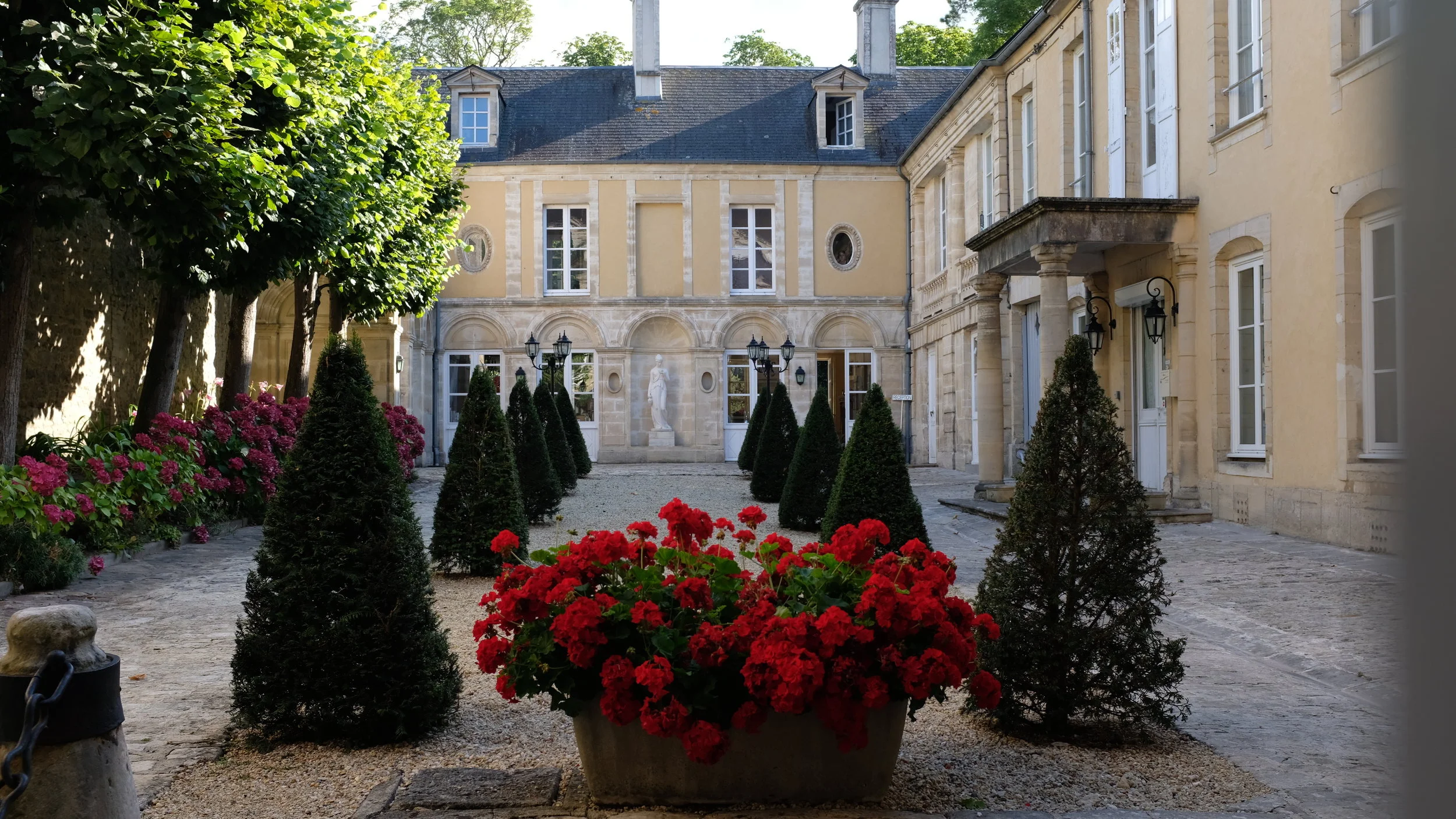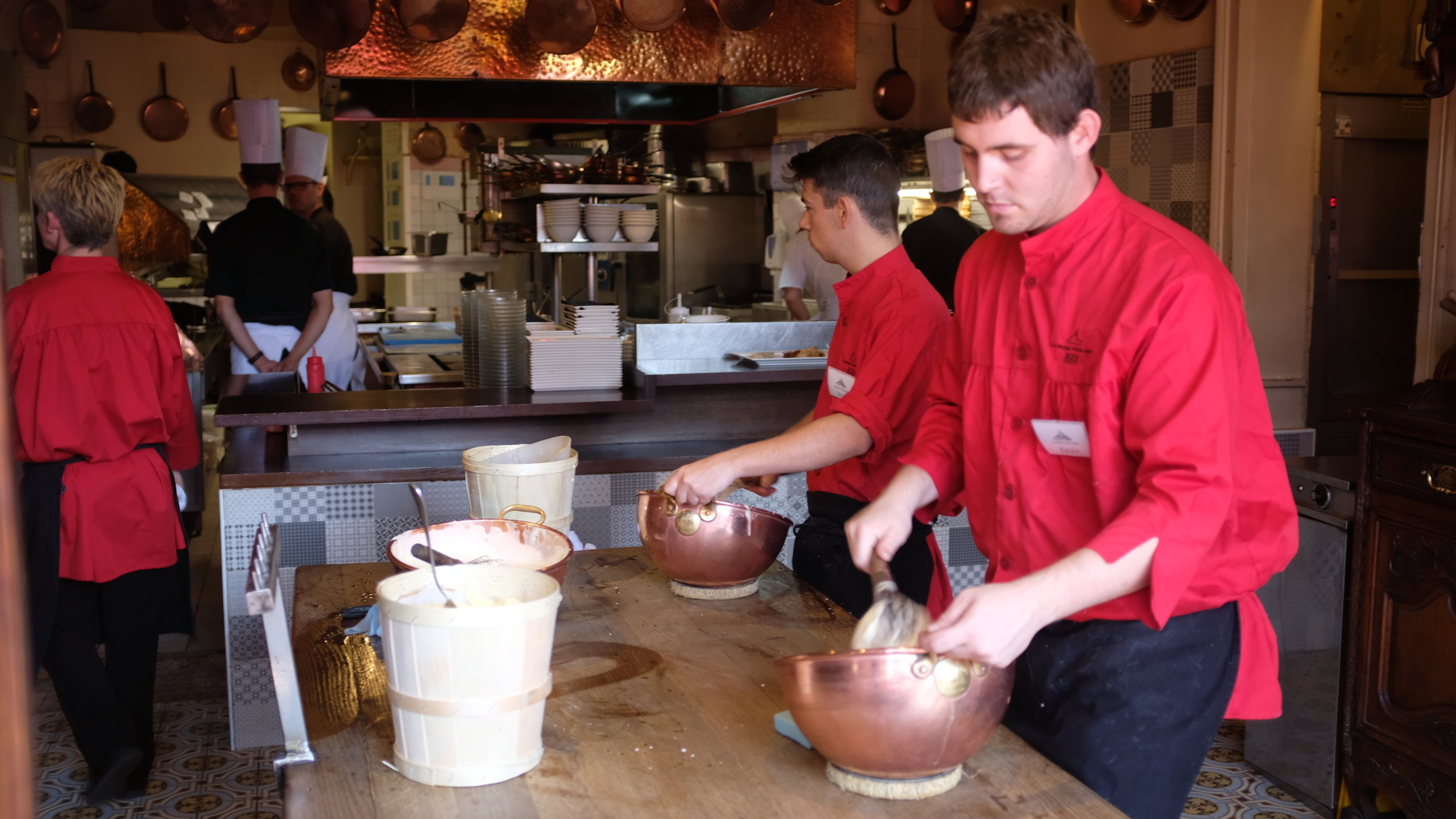Normandy & Mont Saint-Michel
Day 1
After doing some research online, I decided that the best way to get around Normandy and to see all the World War II sites was to rent a car or use a tour company. In Europe, almost all the cars that you can rent are manual, not automatic, and as I have absolutely no idea how to use a stick shift (Dad, you failed me), I opted to use a tour company. So at the instruction of Overlord Tours, I took the first early morning train from Paris to Bayeux and I arrived just in time for a full day tour that focused on the invasion of Normandy by the Allied forces on June 6, 1944.
In full disclosure, I studied WWII history all throughout grade school and college. I also used to have a weird obsession with reading Holocaust books so I already knew a decent bit about what happened on D-Day. But, because it had been awhile since I studied it, I decided to take a nice little refresher course before my excursion and watched Saving Private Ryan. If you haven’t seen it, be prepared to cry… a lot.
The first stop on our tour was Omaha Beach. Omaha Beach was one of the five beaches that Allied forces landed on during D-Day. The other beaches were Utah Beach (Americans), Juno Beach (Canadians), Gold Beach (British), and Star Beach (British). When I arrived at Omaha it was a clear, beautiful summer day. The water was between high and low tide and there were people out sailing, swimming, and walking. It was hard to picture the catastrophe that occurred here almost 75 years ago.
Here are some of the obstacles that the Allied Forces faced at Omaha:
On June 6, 1944, it was 6:30 a.m. when the first wave of American soldiers attempted to storm the beach. The weather was terrible – it was cold, wet, and windy and the soldiers had just been riding in Higgins boats for hours across the English Channel, encountering waves that were 4 to 5 meters high. The plan was for Allied planes to bomb and destroy German bunkers that were along the cliffs and hidden in the dunes before the Allied troops were to make a beach invasion. But as visibility was extremely poor, not one German bunker along Omaha Beach was demolished during these bomb drops. When the infantry arrived by boat, they arrived during low tide but had already been receiving artillery fire from as much as five thousand yards from the beach. Many men drowned trying to jump out of burning boats (the Higgins boats, which were made in New Orleans, were predominately made out of wood). They drowned because they had so much weight in clothes and gear. At 6:36 a.m., the ramps of the first round of Higgins boats were dropped and men jumped out into waist-deep water. Having spent a lot of time on the beaches of Hilton Head Island, I know that it is very difficult to run in waist deep water – imagine doing this in full clothes, with heavy gear, and under constant gunfire. Additionally, because the Allied forces were dropped off at low tide (this was planned as the Germans had placed obstacles in the water that would have sunk the Allied ships if they tried to land at high tide), the Allied forces had to run an extra 300 to 400 yards. Yes, the Normandy beaches have some of the largest differences between high and low tide in the world.
One thing that I learned from my tour guide that I found particularly interesting was how the Germans were positioned in their bunkers. In Saving Private Ryan, they show the Germans positioned along the dunes in steel-enforced concrete bunkers firing directly at the Americans getting out of the boats – so they were firing their guns towards the ocean. This is not accurate. The Germans were smarter than that. They had their guns positioned to be firing perpendicular to the soldiers arriving on shore – so their guns were facing down the beach. This allowed infinitely more chances for bullets to hit someone.
If you are interested in learning more about what happened at Omaha Beach, here is a really good article: https://www.theatlantic.com/magazine/archive/1960/11/first-wave-at-omaha-beach/303365/. It captures firsthand accounts from soldiers that were part of the Omaha Beach invasion and what happened to them.
The second place we visited was the Normandy American Cemetery and Memorial. This beautiful cemetery is situated on a bluff overlooking Omaha Beach. The property is actually owned and operated by the American Battle Monuments Commission, which is a small independent agency of the United States Federal Government. There are over 9,000 American soldiers buried here. This is one of the most beautiful cemeteries I have ever seen. Not only is it impeccably taken care of, it is truly a beautiful resting place honoring the soldiers that selflessly sacrificed their lives for us to live in a peaceful and free world.
The third place that we visited was Pointe du Hoc. This was probably my favorite part of the day. In an effort to not go into too much detail, Pointe du Hoc is essentially a “hook” of land with a 100-foot cliff that juts out into the English Channel. This hook separated Omaha and Utah beaches. It was believed by Allied forces, that the Germans had 155 mm guns situated here. These guns had a firing range of 10+ miles so it was essential for the Allied forces to destroy these guns. In the early morning of June 6, it was the goal of the United States Ranger Army Assault Group to sail ashore, scale these cliffs, and take over the German bunkers… all under enemy fire. And they needed to do it in 30 minutes. To make a long, heroic story short, some of the Rangers survived the scaling of the cliffs and were able to successfully take over the German stronghold.
The last big stop that we made was at Utah Beach. Unlike Omaha Beach, the Allied forces invading Utah did not experience a large amount of casualties. The American soldiers landing on Utah had the objective to secure the beachhead and take over the port facilities at Cherbourg. Out of the 21,000 infantry troops of the 4th division, only 197 lives were lost. The 82nd and 101st Airborne Divisions had a worse outcome – out of the 14,000 troops that were to arrive by parachute and gliders, they had casualties of 2,499. This large amount of casualties was due to many paratroopers missing their marks because of poor visibility and landing directly in enemy territory or drowning in flooded marshlands.
Once the tour ended and I was back in Bayeux for the evening, I made a quick trip to Bayeux Cathedral. Bayeux Cathedral is a Romanesque-Gothic cathedral that was once the home of the Bayeux Tapestry. Today, the Bayeux Tapestry is in a separate museum in the town of Bayeux.
Day 2
On my 2nd Day in Normandy, I decided to take a day trip to Mont Saint-Michel. Mont Saint-Michel is an island commune in Normandy, France – about two hours west of Bayeux. I used a private shuttle service to get to and from Mont Saint-Michel, as once again, I couldn’t rent a car. This was nice as I was able to get some good reading in on the bus going and coming. (I am reading Atlas Shrugged right now and am really enjoying it).
Mont Saint-Michel is truly an architectural wonder. It was originally built in the 8th century as a monastery and the abbey still houses monks. Over the centuries, the abbey and commune have seen a number of additions and renovations making it into the fortress-like island that we see today. The island is located several hundred feet from land and is walkable during low tide. The commune’s position is ideal and perhaps why it has lasted so long, as it is able to use the water as a natural barrier between itself and foreign invaders.
The views from the abbey of the surrounding area are absolutely stunning and I really enjoyed my visit to the island. I was glad that I visited the abbey early in the day because by lunchtime, the island was extremely crowded. Also, if you ever make it to Mont Saint-Michel, make sure to eat at La Mere Poulard and get the house specialty – the omelet. It was out of this world but very expensive so be prepared to drop some cash.




























































